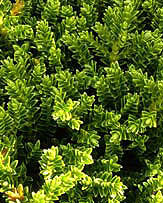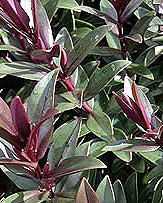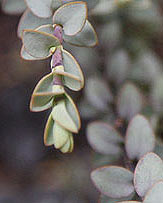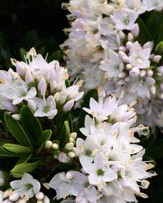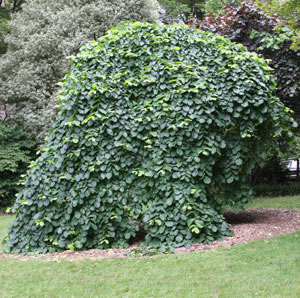
Garden Trees
Trees are one of the most important aspects of garden and landscape design. Garden Trees may be purely ornamental, shade giving or used to provide a focal point. Trees and shrubs can also act as privacy screens, garden dividers and windbreaks. With so many available for sale, we provide a guide to some of the top garden trees for UK gardens
Garden trees or 'ornamental trees' are an established part of most major gardens and parks.
A quick survey will probably show that some of the most common garden trees include : Alder, Ash, Beech, Birch, Crab apple, Hawthorn, Holly, Horse chestnut, Oak, Poplar, Rowan, Sycamore and the Willow. However are these the best garden trees.
You requirements may well differ to what are simply listed as the 'best garden trees'. What we are looking for is the best tree for your garden. Identifying the right tree for tour garden with so many available for sale requires a little research.
Choosing the right tree size for your garden
We can start with size. Small trees are great, not only for small gardens but also to add scale to larger gardens. Most small trees tend to be slow growing. AN option is to choose a faster growing species and prune it to size. This can work well with some trees, however with many it can also destroy the natural shape and growth habit.
Often nurseries are asked, how big will this tree get ? The answer is always an approximation, because it depends on the soil, location and other factors. Trees will actually keep growing for a long time, some just slow right down after 10 years or so. Others will grow at a good rate for 20 years.
Evergreen or deciduous.
We then look at evergreen or deciduous, both have advantages depending on the use. Evergreen trees can provide year round shade and screening. They can also provide a continual backdrop in the garden. Deciduous trees can let light in in winter, in our climate this is welcome in many landscaping situations.
Fruiting or Non Fruiting
Some ornamental trees produce fruit, which may be great, however it may also just create a mess. Cornus capitata is one, the female Ginkgo is another, so be selective with this.
Other Characteristics of garden trees
- Flowering
- Foliage color and texture
- Bark color and texture
- Maintenance requirements
- Root system
- Suitability for containers
- Seasonal interest.
Small Trees for the Garden
For many gardens, smaller trees are the best solution. Those that will reach between 7 and 10m in height.
Some of the best include.
- Acer palmatum - The Japanese Maples
- Arbutus unedo - Irish Strawberry tree,
- Styrax japonicus -
- Malus - Crabapple
- Cercis siliquestrum - Forest Pansy
- Sorbus species
- Prunus - Flowering cherries
- Cornus kousa - Dogwood
Top Twenty Garden Trees
Trees that can hold their heads high in most gardens.
- Acer griseum (Paperbark Maple)
This rare and slow growing tree with 3 lobed leaves which turn scarlet in autumn has fantastic peeling bark and a mahogany coloured trunk. - Acer palmatum dissectum seiryu
This is the only upright Dissectum (cutleaf) Japanese Maple. It's tough, vigorous yet dainty. Very nice pale green foliage turning brilliant Autumn tones of red and orange. - Acer negundo flamingo
White variegated leaves with new growth bright pink. Hardy and showy tree. - Aesculus hippocastanum Baumannii
Horse Chestnut with Double white flowers . Does not set seed - Betula albosinensis septentrionalis (Chinese Red Birch)
Birch with beautiful bark orange-brown with pink-grey 'bloom'. - Carpinus betulus 'Pendula'. ( Weeping hornbeam)
The Weeping hornbeam is an outstanding hardy weeping mound forming deciduous tree. - Cercis canadensis - Forest Pansy (Judas Tree or Purple leafed Redbud)
These can be a little 'straggly' but can do well at the back of the border. A small deciduous tree with stunning purple heart-shaped foliage. Showy pink-mauve flowers on bare stems in spring. - Cornus controversa ' Variegata'
This is a great allrounder. A slow growing tree with distinctly layered branches, leaves boldly edged white. - Davidia involucrata (Dove Tree, or Pocket Handkerchief Tree)
A simply outstanding tree with large white, showy bracts surround the tiny flowers in late spring. Deciduous tree with heart shaped leaves growing best in well watered ,sheltered site - Fagus sylvatica 'Aurea Pendula'
This one needs protection from the hot sun, and is not a really strong growing tree. However it is a dramatic weeping tree with bright yellow leaves. - Ginkgo Biloba (Maidenhair-tree)
Fantastic fern like foliage turning buttery yellow in autumn - Luculia gratissima
Frost tender, and needs a really sheltered position. However the fragrant, large, pink flower heads in winter - spring could be worth a try. - Magnolia denudata (Yulan)
Superb tree with ivory white flowers in early spring or late winter , before the leaves. One of the earliest Magnolias to flower.Tends to be quite narrow when young , older trees broadening. - Nothofagus antarctica
Deciduous medium sized "Beech" with small leaves. - Pseudocydonia sinensis
This one needs shelter from cold winds. A small tree with attractive bark which flakes into fawn and grey patches. Pink flowers in spring followed by large yellow quince fruits up to 18 -20 cm long. Semi -evergreen with leaves often colouring in autumn - winter . - Pyrus calleryana 'Cleveland Select' (Flowering Pear)
Upright, narrowly pyramidal. Reddish-purple autumn colour. Thornless. Leaves narrower than Bradford.11-13 metres by 5 metres wide. - Sorbus cashmiriana (Rowan)
Small deciduous tree with pinnate foliage. Lovely white marble sized fruits hanging in clusters and are long lasting from autumn to winter. Flowers pale pink. - Tilia x europaea (European Lime)
Large handsome tree often used in parks or as street trees in Europe. Scented flowers used to make a popular herbal tea in its native lands - Ulmus parvifolia. (Chinese Elm)
Tree with elegant canopy of dainty small leaves. Often with flaking bark. - Ulmus glabra Camperdownii 'Weeping-Elm'.
